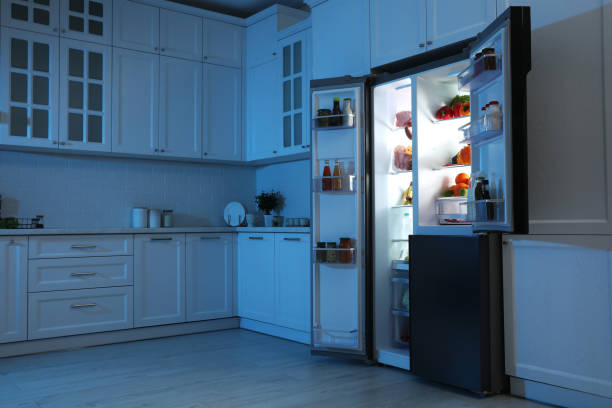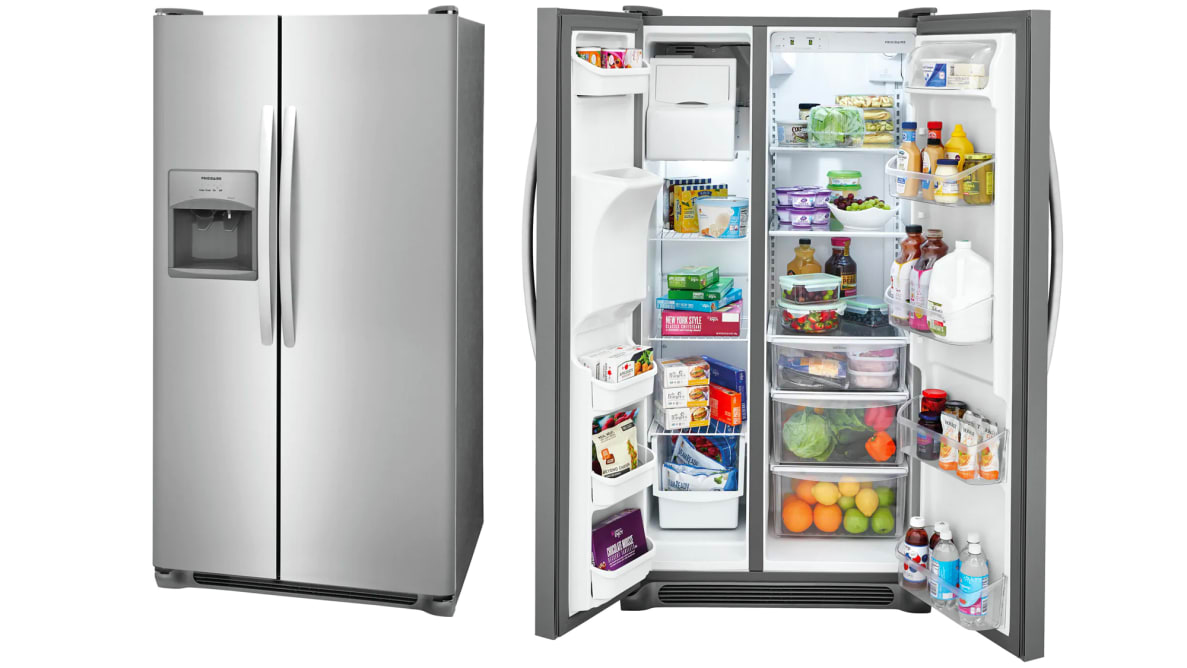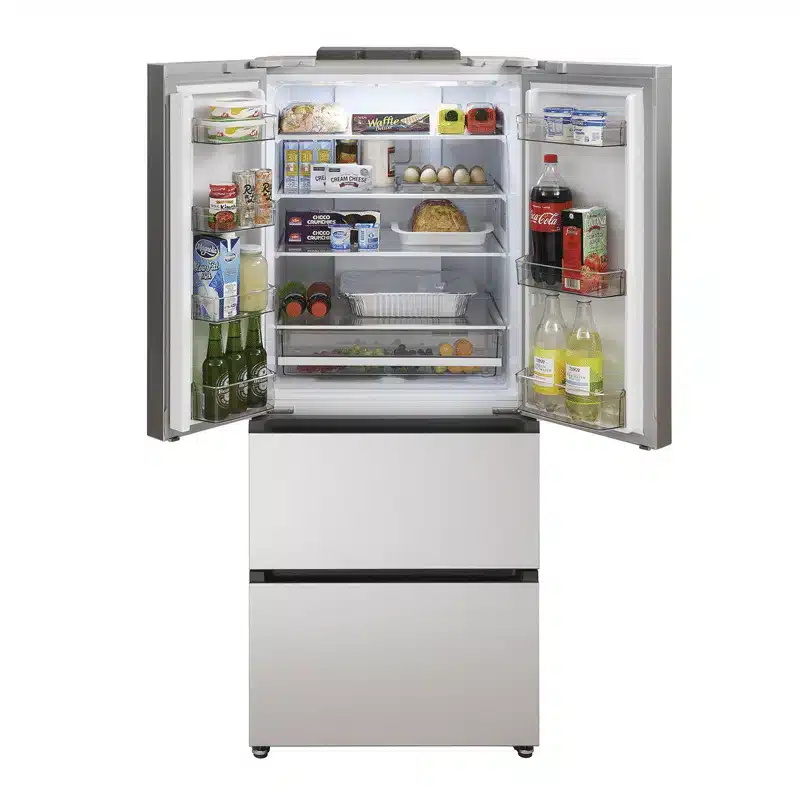If you have a Whirlpool fridge that is not cooling but the freezer works fine, you may be wondering what is wrong and how to fix it. A fridge that is not cooling properly can spoil your food and cause health risks. Fortunately, there are some common causes and solutions for this problem that you can try yourself or with the help of a professional.
The possible causes for a Whirlpool fridge not cooling but the freezer works are:
- Dirty or clogged condenser coils
- Damaged or worn door gasket
- Faulty evaporator fan motor
- Defective temperature control thermostat
- Malfunctioning defrost system
The solutions for these causes are:
- Cleaning or replacing the condenser coils
- Replacing the door gasket
- Replacing the evaporator fan motor
- Testing and replacing the temperature control thermostat
- Testing and replacing the defrost system components**
Dirty or clogged condenser coils
The condenser coils are located at the back or bottom of the fridge and help to cool and condense the refrigerant from vapor to liquid. If the condenser coils are dirty or clogged with dust, dirt, or debris, they will not be able to dissipate heat efficiently and the refrigerant will not cool enough to keep the fridge cold.
To fix this problem, you need to clean or replace the condenser coils. To clean the coils, you need to:
- Unplug the fridge and pull it away from the wall
- Locate the condenser coils and remove any cover or panel that may block them
- Use a vacuum cleaner with a brush attachment or a soft brush to gently remove any dust or dirt from the coils
- Use a damp cloth to wipe away any remaining dirt or grease
- Replace the cover or panel and plug in the fridge
To replace the coils, you need to:
- Unplug the fridge and pull it away from the wall
- Locate the condenser coils and remove any cover or panel that may block them
- Disconnect any wires or hoses that may be attached to the coils
- Remove any screws or clips that may hold the coils in place
- Carefully pull out the old coils and dispose of them properly
- Install the new coils in reverse order of removal
- Replace the cover or panel and plug in the fridge

Damaged or worn door gasket
The door gasket is a rubber seal that forms an airtight seal between the door and the fridge body. It prevents warm air from entering the fridge and cold air from escaping. If the door gasket is damaged, torn, or worn out, it may create gaps that will allow air leaks that can cause condensation and frost formation inside the fridge.
To fix this problem, you need to replace the door gasket. To replace the gasket, you need to:
- Unplug the fridge and open the door
- Locate the door gasket and inspect it for any cracks, tears, or gaps
- Use a putty knife or a flathead screwdriver to pry out the old gasket from its groove on the door
- Clean any dirt or residue from the groove with a damp cloth
- Align the new gasket with its groove on the door and press it firmly into place
- Close the door and check for any gaps or misalignment
- Plug in the fridge
Faulty evaporator fan motor
The evaporator fan motor is located inside the freezer compartment and draws cold air over the evaporator coils and circulates it throughout the freezer and fridge. If the evaporator fan motor is faulty, it may not spin properly or at all, resulting in reduced airflow and insufficient cooling.
To fix this problem, you need to replace the evaporator fan motor. To replace the motor, you need to:
- Unplug the fridge and open both doors
- Locate the evaporator fan cover inside the freezer and remove any screws or clips that may hold it in place
- Carefully pull out the cover and disconnect any wires that may be attached to it
- Remove any screws or clips that may hold the fan blade or motor in place
- Carefully pull out the fan blade and motor assembly and dispose of them properly
- Install the new fan blade and motor assembly in reverse order of removal
- Reconnect any wires and replace any screws or clips that may hold them in place
- Replace the evaporator fan cover and plug in the fridge

Defective temperature control thermostat
The temperature control thermostat is located inside the fridge compartment and directs voltage to the compressor, evaporator fan motor, and condenser fan motor (if applicable). If the temperature control thermostat is defective, it may prevent the refrigerant system from running properly, resulting in the fridge not cooling as expected.
To fix this problem, you need to test and replace the temperature control thermostat. To test and replace the thermostat, you need to:
- Unplug the fridge and open the door
- Locate the temperature control thermostat and remove any cover or panel that may block it
- Use a multimeter to test the thermostat for continuity and resistance. If the thermostat does not have continuity or has incorrect resistance, it is defective and needs to be replaced
- Disconnect any wires that may be attached to the thermostat
- Remove any screws or clips that may hold the thermostat in place
- Carefully pull out the old thermostat and dispose of it properly
- Install the new thermostat in reverse order of removal
- Reconnect any wires and replace any cover or panel that may block it
- Plug in the fridge
Malfunctioning defrost system
The defrost system consists of several components that work together to melt any frost or ice that may accumulate on the evaporator coils. The defrost system includes the defrost heater, the defrost thermostat, and the defrost timer or control board. If any of these components are malfunctioning, frost or ice will continue to build up on the coils and block the airflow, causing the fridge not to cool.
To fix this problem, you need to test and replace the defrost system components. To test and replace the components, you need to:
- Unplug the fridge and open both doors
- Locate the evaporator coils inside the freezer and check if they are frosted over. If they are, you have a problem with your defrost system
- Locate the defrost heater, which is an element that heats up during the defrost cycle and melts any frost or ice on the coils. Use a multimeter to test the heater for continuity and resistance. If the heater does not have continuity or has incorrect resistance, it is defective and needs to be replaced
- Locate the defrost thermostat, which is a sensor that monitors the temperature of the coils and triggers the defrost cycle when they get too cold. Use a multimeter to test the thermostat for continuity when it is cold. If the thermostat does not have continuity when it is cold, it is defective and needs to be replaced
- Locate the defrost timer or control board, which is a device that controls how often and how long the defrost cycle runs. Depending on your model, you may have a mechanical timer or an electronic control board. To test a mechanical timer, use a flathead screwdriver to advance it until it clicks into defrost mode. Wait for about 30 minutes and check if the heater turns on. If it does not, you have a problem with your timer or your heater. To test an electronic control board, use a multimeter to check for voltage at the heater terminals when it is in defrost mode. If there is no voltage, you have a problem with your control board or your heater.
- Disconnect any wires or hoses that may be attached to the components
- Remove any screws or clips that may hold the components in place
- Carefully pull out the old components and dispose of them properly
- Install the new components in reverse order of removal
- Reconnect any wires or hoses that may be attached to them
- Plug in the fridge

Conclusion
A Whirlpool fridge not cooling but freezer works can be caused by several factors, such as dirty or clogged condenser coils, damaged or worn door gasket, faulty evaporator fan motor, defective temperature control thermostat, or malfunctioning defrost system. To fix these problems, you need to clean or replace the condenser coils, replace the door gasket, replace the evaporator fan motor, test and replace the temperature control thermostat, or test and replace the defrost system components.



